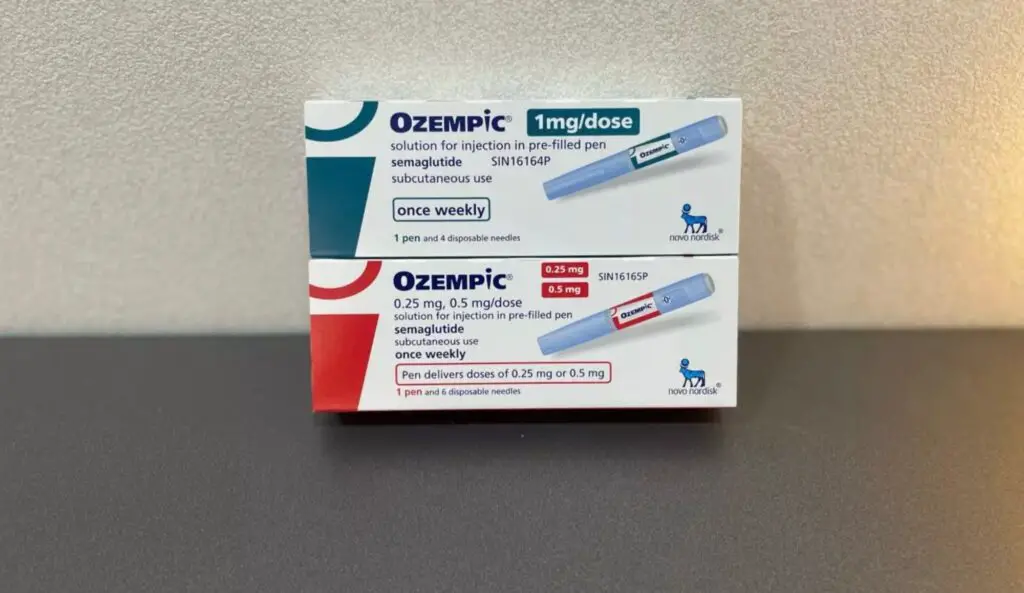If you’re taking Ozempic (semaglutide) to manage your type 2 diabetes, you’re likely aware that a healthy diet and exercise plan can help you achieve better results. While there are no specific foods you must avoid when taking Ozempic, there are some foods that you should limit or avoid to help the medication work more effectively. This article’ll discuss the foods you should avoid when taking Ozempic to help you achieve better results.
Ozempic, a prescription medication, serves to lower blood sugar levels and facilitate weight loss. Nonetheless, it may result in side effects such as nausea, vomiting, diarrhea, and constipation.
In this article, we’ll discuss the foods that can cause side effects and how to avoid them. By following these tips, you can help reduce the risk of side effects and achieve better results with Ozempic.
If you’re looking to manage your type 2 diabetes with Ozempic, it’s important to understand how your diet can affect the medication’s effectiveness. While no specific foods you must avoid, some can interfere with the medication’s ability to lower blood sugar levels and aid in weight loss. Avoiding these foods can help Ozempic work more effectively and achieve better results. This article’ll discuss the foods you should avoid when taking Ozempic and how to incorporate healthy foods into your diet to achieve better results.
Understanding Ozempic Foods
If you have been diagnosed with type 2 diabetes, your healthcare provider may have prescribed Ozempic to help manage your blood sugar levels. Ozempic medication contains semaglutide, a glucagon-like peptide-1 (GLP-1) receptor agonist. FDA-approved for use in adults with type 2 diabetes, it is administered through subcutaneous injection.
Ozempic mimics the effects of GLP-1, a hormone that stimulates insulin secretion and reduces glucagon secretion. This helps to lower blood sugar levels and can also aid in weight loss. It is important to note that Ozempic is not a substitute for a healthy diet and exercise plan but should be used with these lifestyle changes.
The starting dose of Ozempic is typically 0.25 mg once a week, and after four weeks, the dose may be increased to 0.5 mg once a week. Your healthcare provider may adjust your dose based on your needs and medication response. It is important to follow your healthcare provider’s instructions regarding the dosing of Ozempic.
It is also important to note that Ozempic is not suitable for everyone. It should not be used to treat type 1 diabetes or diabetic ketoacidosis. Additionally, it may not be recommended for individuals with a history of pancreatitis or a family history of medullary thyroid carcinoma. Your healthcare provider will determine if Ozempic is right for you based on your medical history and current health status.
Overall, Ozempic can be an effective medication for managing type 2 diabetes. Still, it is important to understand how it works and to follow your healthcare provider’s instructions regarding dosing and use.
Side Effects of Ozempic
For individuals using Ozempic, it is vital to be mindful of the potential side effects that might arise. In this section, we’ll cover the common and serious side effects of Ozempic.
Common Side Effects
Nausea is the most commonly reported side effect of Ozempic, affecting up to 1 in 5 people who take the medication. Other gastrointestinal issues, such as diarrhea, vomiting, and stomach pain, may also occur in 5% to 10% of people. Constipation and gassiness are also possible side effects.
These side effects are usually mild and go away independently over time. However, you should contact your healthcare provider if they persist or become severe.
Serious Side Effects
While rare, some serious side effects may occur with Ozempic. Hypoglycemia, or low blood sugar, is a potential risk when taking Ozempic, especially if you also take other diabetes medications. Symptoms of hypoglycemia include sweating, shaking, dizziness, and confusion.
Another significant side effect of Ozempic is pancreatitis, a potentially life-threatening inflammation of the pancreas. Symptoms of pancreatitis encompass severe abdominal pain, along with nausea and vomiting.
In rare cases, Ozempic may also cause kidney problems or thyroid cancer. Suppose you experience any symptoms of kidney problems, such as swelling in the legs or feet, or symptoms of thyroid cancer, such as a lump or swelling in the neck. In that case, you should contact your healthcare provider immediately.
Finally, some people may experience an allergic reaction to Ozempic, which can cause symptoms such as a rash, itching, swelling, fever, and dizziness. If you experience any of these symptoms, seek medical attention right away.
It’s important to remember that not everyone will experience these side effects and that the benefits of taking Ozempic may outweigh the risks for some people. If you have any concerns about the side effects of Ozempic, talk to your healthcare provider.
Ozempic and Diet
When taking Ozempic, it is important to maintain a healthy diet that help manage your blood sugar levels and weight. Here are some tips on what foods to avoid and what to eat when on Ozempic.
Foods to Avoid
While there are no specific foods that you must avoid when taking Ozempic, there are some foods that you may want to limit or avoid altogether. These include:
- Fried foods: Due to their high fat and calorie content, fried foods have the potential to contribute to weight gain and also elevate blood sugar levels.
- Sugary foods: Consuming foods high in sugar can result in a swift surge in blood sugar levels, posing a potential danger for individuals with diabetes.
- Refined carbohydrates: Any Foods high in refined carbohydrates, such as white bread & pasta, can cause a rapid increase in blood sugar levels.
- High-fat foods: Foods high in fat, such as greasy and fatty foods, can lead to weight gain and high blood sugar levels.
- Alcohol: Alcohol can cause low blood sugar levels and interfere with the effectiveness of Ozempic.
Foods to Eat
When on Ozempic, eating a healthy and balanced diet rich in nutrients is important. Here are some foods that you should include in your meal plan:
- Vegetables: Vegetables are low in calories and fiber, which can help you feel full and satisfied.
- Fruits: Fruits are also a great source of vitamins and minerals and can help satisfy your sweet tooth without causing a rapid increase in blood sugar levels.
- Whole grains: Whole grains are a great source of fiber and can help regulate blood sugar levels.
- Lean protein: Chicken, fish, and legumes can help you feel full and satisfied without causing a rapid increase in blood sugar levels.
- Healthy fats: Healthy fats, such as those found in nuts, seeds, and avocado, can provide energy and help you feel full and satisfied.
Remember also to pay attention to portion sizes and stay hydrated throughout the day. If you have any questions about your diet, consider consulting a registered dietitian to help you develop a healthy meal plan that works for you.
Ozempic and Blood Sugar Control
When taking Ozempic, it is important to maintain stable blood sugar levels. This medication works by increasing insulin production, which helps to lower blood sugar levels. However, certain foods can cause blood sugar levels to spike too quickly, which can be dangerous for people with diabetes.
To help maintain stable blood sugar levels while taking Ozempic, you should avoid foods high in sugar and carbohydrates. This includes sugary drinks, candy, baked goods, and starchy foods like potatoes and rice.
You should Monitoring your blood sugar levels regularly and adjusting your diet and medication as needed is also important. If you experience symptoms of low blood sugar, such as dizziness, confusion, or sweating, you should consume a source of quick-acting carbohydrates, such as fruit juice or candy, to raise your blood sugar levels.
By following a Strict healthy diet and monitoring your blood sugar levels, you can maintain good blood sugar control while taking Ozempic.

Ozempic and Physical Activity
In effectively managing type 2 diabetes, physical activity holds a crucial role as it contributes to improving blood sugar levels, reduce your risk of any heart disease, and also help you maintain a healthy weight.
If you are taking Ozempic, it is important to discuss your daily physical activity plan with your doctor to make sure it is safe and effective.
When starting a physical activity routine, it is important to slowly and gradually increase the intensity and duration of your workouts. It also helps in preventing injuries and reducing the risk of hypoglycemia (low blood sugar). It is very Important to Monitor your blood sugar levels before, during, and after exercise.
If you experience any symptoms of hypoglycemia during exercise, such as dizziness, shakiness, or confusion, it is important to stop and treat your low blood sugar immediately. You may need to carry a fast-acting carbohydrate, such as glucose tablets or juice, during exercise.
In addition to aerobic exercise, strength training is also important for managing type 2 diabetes. Strength training may help improve your muscle mass and increase your metabolism, which can help you burn more calories daily and improve your blood sugar control.
Working with a qualified trainer or physical therapist is important to develop a safe and effective strength training plan.
Overall, physical activity is an important part of managing type 2 diabetes and can be safe and effective for individuals taking Ozempic.
Ozempic and Health Risks
When taking Ozempic, knowing the potential health risks associated with the medication is important. While Ozempic can effectively manage type 2 diabetes, it can also increase the risk of certain health issues.
Cardiovascular Risks
Studies have shown that Ozempic may increase the risk of cardiovascular events such as heart attack and stroke. Talking to your healthcare provider about any pre-existing cardiovascular conditions before starting treatment with Ozempic is important.
Other Health Risks
In addition to cardiovascular risks, Ozempic may increase the risk of other health issues, such as diabetic retinopathy and gallbladder disease.
It is also important to note that the weight loss effects of Ozempic may lead to a higher risk of death in patients with pre-existing heart disease. It is crucial to discuss any concerns with your healthcare provider before starting treatment with Ozempic.
Ozempic Foods to Avoid and Lifestyle Changes
When taking Ozempic, it’s important to make some lifestyle changes to help manage your symptoms and improve your overall health. Here are some tips to help you make the most of your treatment:
Diet
While there is no specific diet you neezd to follow when taking Ozempic, it’s important to avoid certain foods that can worsen your symptoms. These include fried foods, high glycemic vegetables, drinks with added sugar, and refined carbs. Instead, focus on eating fresh fruits, vegetables, whole grains, legumes, and low- or non-fat dairy products. A low-fat, low-carbohydrate, Mediterranean, or vegetarian diet may also be acceptable.
Exercise
Alongside maintaining a healthy diet, incorporating regular exercise into your routine plays a pivotal role in managing symptoms and enhancing overall health. Aim to engage in moderate-intensity exercise for a minimum of 30 minutes on most days of the week, which can encompass activities such as walking, jogging, swimming, or cycling.
Bloating
Bloating is a common side effect of Ozempic, but there are some things you can do to help manage it. First, avoid eating large meals or drinking too much fluid at once. Rather than consuming large meals, consider opting for smaller, more frequent meals throughout the day. Additionally, it is advisable to avoid carbonated beverages as they may contribute to bloating.
Higher doses
If you take a higher dose of Ozempic, you may experience more severe side effects. In this case, talking to your doctor about adjusting your treatment plan is important. They may recommend starting with a lower dose and gradually increasing it over time. It’s also important to follow your doctor’s instructions carefully and report any side effects you experience.
Communicating with Your Healthcare Provider
When taking Ozempic, it is important to communicate regularly with your healthcare provider to ensure the medication works effectively and to address any concerns or questions you may have. Your healthcare provider can also guide what foods to avoid while taking Ozempic.
It is recommended that you follow a healthy diet and exercise plan as recommended by your healthcare provider for treatment for type 2 diabetes. This may include avoiding regular consumption of foods high in fat, sugar, and calories. While there are no specific foods you must avoid when taking Ozempic, some foods can worsen the side effects of the medication, such as nausea, vomiting, diarrhea, and constipation.
During your appointments with your healthcare provider, discuss any changes in your diet or exercise routine and any new symptoms or side effects you may be experiencing. Your healthcare provider can also guide you on managing any side effects you may be experiencing.
It is important to follow the guidelines your healthcare provider provides when taking Ozempic. This includes taking the medication as prescribed, following a healthy diet and exercise plan, and communicating regularly with your healthcare provider. By working closely with your healthcare provider, you can ensure that you get the most out of your treatment with Ozempic and manage your type 2 diabetes effectively.
Final Thoughts
While Ozempic can be an effective treatment for managing type 2 diabetes, knowing the potential health risks associated with the medication is important.
Talking to your healthcare provider about any pre-existing conditions and monitoring any symptom changes while taking Ozempic is crucial.
Frequently Asked Questions of Ozempic Foods to Avoid
What is the best food to eat while taking Ozempic?
There are no specific foods that you must eat while taking Ozempic. To optimize the efficacy of Ozempic and improve blood sugar levels, it is advisable to adhere to a nutritious and well-balanced diet that is low in fat, sugar, and calories.
How do I maximize my weight loss on Ozempic?
To optimize weight loss while taking Ozempic, it is crucial to combine the medication with a healthy diet and exercise plan. Avoiding high-calorie and high-fat foods, and instead prioritizing lean proteins, fruits, vegetables, and whole grains will contribute to the desired outcomes.
Why is it hard to eat on Ozempic?
Some people may experience nausea, vomiting, or loss of appetite while taking Ozempic. These side effects can make eating difficult, but they improve over time as your body adjusts to the medication. To help alleviate these symptoms, try eating smaller, more frequent meals throughout the day and avoiding foods that may trigger nausea.
Can you eat cheese on Ozempic?
There are no specific foods that you must avoid while taking Ozempic, including cheese. However, it is important to consume cheese in moderation as it is high in fat and calories. Choose low-fat cheese options and consume them in small portions as part of a balanced diet.
What are the symptoms of pancreatitis while taking Ozempic?
While Pancreatitis is a rare but severe side effect of Ozempic, it is essential to be aware of the associated symptoms, which may encompass intense abdominal pain, nausea, vomiting, and fever. In the event that you experience any of these symptoms, it is crucial to promptly seek medical attention.
What can I do to relieve nausea while taking Ozempic?
To relieve nausea while taking Ozempic, To address nausea, consider consuming smaller, more frequent meals throughout the day and steering clear of potential trigger foods. Drinking fluids and getting enough rest can also help alleviate these symptoms. If your nausea persists, talk to your healthcare provider about adjusting your medication dosage or trying a different treatment option.
Also Read:





















